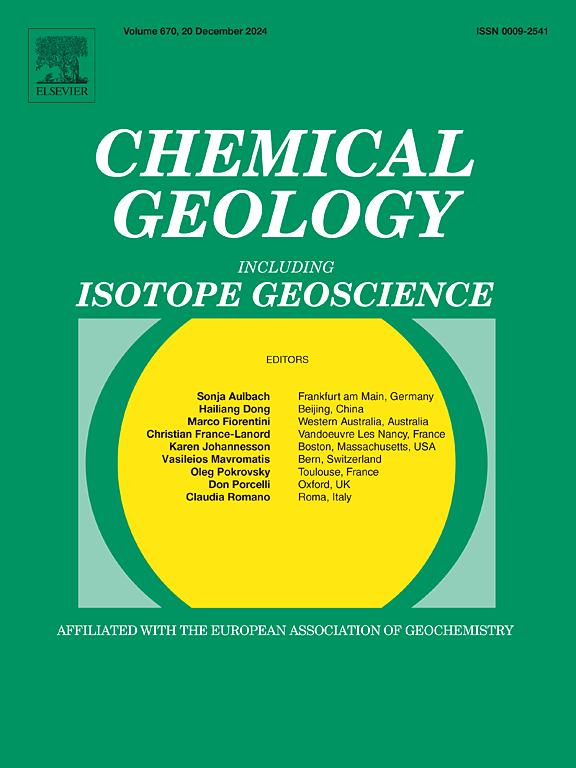Quantitative insight into Cr(VI) adsorption and reduction by ferrihydrite-humic acid co-precipitates: Development of multistep kinetic model integrating synergistic/antagonistic factors
IF 3.6
2区 地球科学
Q1 GEOCHEMISTRY & GEOPHYSICS
引用次数: 0
Abstract
Ubiquitous amorphous ferrihydrite (Fh) and humic substances (HSs) combining into co-precipitates fundamentally alters the processes by which they reduce the mobility and toxicity of Cr(VI) contaminants in groundwater and soil. However, the kinetic characteristics of the interactions between Fh–humic acid (HA) co-precipitates and Cr(VI) remain poorly understood. In this study, the kinetics of Cr(VI) adsorption and reduction by Fh–HA co-precipitates were examined under mildly acidic experimental conditions (pH 4–5). Compared to Fh and HA in their pure phases, Cr(VI) adsorption by Fh in co-precipitates was inhibited (antagonistic adsorption), whereas Cr(VI) reduction by HA in co-precipitates was enhanced (synergistic reduction). A successful multistep kinetic model was developed to simulate this complex reaction process involving both adsorption and reduction and effectively overcome the limitations of classical kinetics. The antagonistic adsorption effect ranged between 2 %–11 % mainly because of HA competing for adsorption sites on Fh, whereas the synergistic reduction effect varied between 116 %–518 % mainly because the highly reductive active components within the HA molecules preferentially bind to Fh during co-precipitate formation (molecular fractionation). Both the antagonistic adsorption and synergistic reduction effects are influenced by the structural types of the Fh–HA co-precipitates, being particularly pronounced in Fh-like co-precipitates characterized by a low C/Fe ratio. Our findings provide a comprehensive perspective for quantitatively assessing the role of Fh–HS co-precipitates regarding Cr(VI) contamination in groundwater, contributing to its evaluation, management, and remediation.

求助全文
约1分钟内获得全文
求助全文
来源期刊

Chemical Geology
地学-地球化学与地球物理
CiteScore
7.20
自引率
10.30%
发文量
374
审稿时长
3.6 months
期刊介绍:
Chemical Geology is an international journal that publishes original research papers on isotopic and elemental geochemistry, geochronology and cosmochemistry.
The Journal focuses on chemical processes in igneous, metamorphic, and sedimentary petrology, low- and high-temperature aqueous solutions, biogeochemistry, the environment and cosmochemistry.
Papers that are field, experimentally, or computationally based are appropriate if they are of broad international interest. The Journal generally does not publish papers that are primarily of regional or local interest, or which are primarily focused on remediation and applied geochemistry.
The Journal also welcomes innovative papers dealing with significant analytical advances that are of wide interest in the community and extend significantly beyond the scope of what would be included in the methods section of a standard research paper.
 求助内容:
求助内容: 应助结果提醒方式:
应助结果提醒方式:


